Will a Sidewinder Join Yamaha’s Viper Nest?
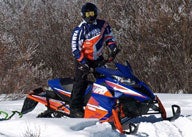
Yamaha trademarks Sidewinder name for snowmobile usage
The snowmobiling Twitter-verse and forum chatter gets excited when tidbits of newsy things leak out. Such as the fact that in November, Yamaha applied for a trademark for the name Sidewinder for something(s) snowmobile-oriented. Checking in on various forums finds all kind of guessing. What is known? Virtually nothing other than such a trademark application was filed on behalf of Yamaha on November 28, 2014 and it relates to “…Snowmobiles and structural parts thereof.”
Interestingly, since 1980 when Scorpion introduced its 440cc Sidewinder as a 1981 model, the name has surfaced as a Diamond Drive chaincase upgrade offered by STM Powersport of Waterford. Mich. And, of course, Yamaha lays claim to the name Sidewinder as a cabling device to combine the power of two Yamaha EF2000 inverter generators. But, that has nothing to do with Yamaha snowmobiles.
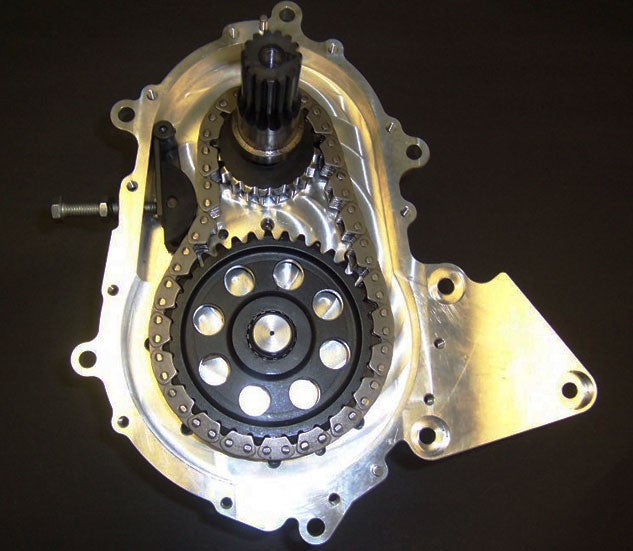 The Sidewinder name is already in play in snowmobiling as it’s a Diamond Drive chaincase upgrade offered by STM Powersport of Waterford, Michigan. (Image courtesy of STM Powersport)
The Sidewinder name is already in play in snowmobiling as it’s a Diamond Drive chaincase upgrade offered by STM Powersport of Waterford, Michigan. (Image courtesy of STM Powersport)The Sidewinder name makes sense as an addition to the Viper nest. All Vipers utilize the 1049cc four-stroke triple and Yamaha has about exhausted that market niche of trail, stretch track, off-trail and powder burners. Forum chatter suggests a new or revamped Phazer model. Fact is that Yamaha’s Phazer may be nearing its expiration date, but is that four-stroke 80-90 horsepower market big enough to warrant the expense of totally new models?
Ski-Doo certainly thought so and has done extremely well with its series of 90hp ACE 900 models. Yamaha’s high-revving 500cc four-stroke twin owned the market prior to the Ski-Doo assault, but that has changed and Ski-Doo shows zero signs of backing away from any product niche that helps it continue on as the world’s Number One selling snowmobile brand.
COMPARISON: Read our review of the 2015 Yamaha Phazer RTX
Suspecting like the forum mongers that the Sidewinder name is a new Yamaha snowmobile and may well be associated with the Arctic Cat/Yamaha program, the next season or two may be quite interesting. Of course, the trademark application must move ahead successfully, but figuring that it does, where does that leave our suspicions of a new sled or sleds.
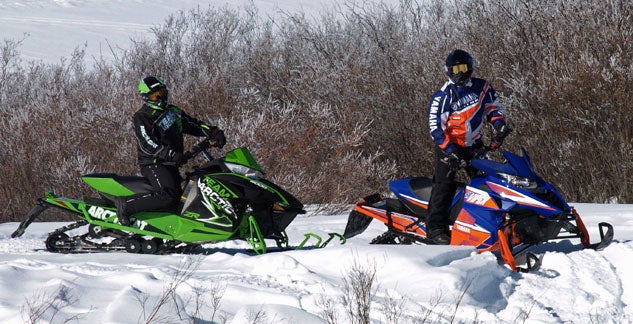 The Arctic Cat/Yamaha collaboration on the Viper series has been good for Yamaha dealers. Would a joint venture “Sidewinder” reap similar benefits?
The Arctic Cat/Yamaha collaboration on the Viper series has been good for Yamaha dealers. Would a joint venture “Sidewinder” reap similar benefits?First off, Yamaha’s Phazer may be tired as already suggested. If we expect this is a collaborative effort, how does this fit into the Arctic Cat line? Let’s see, Arctic Cat has suggested a couple of things. One is that there may be a newer series of high performance trail and or mountain sleds coming. That would leave the Procross and Proclimb chassis models as the total replacement for the Twin Spar designs that should be ending their runs soon. After all, we figure that the all-new 2015 Pantera chassis likely will serve as the foundation for new Bearcat utility models and some new touring sleds.
The Twin Spar line of Lynx 2000 fan-cooled models must be heading to extinction as well. Of course, we’ve tried to write off two-stroke dirty 550 fan-cooled engines in the past and they still hang around. Cat continues to use fan-cooled power in its low-end utility-touring market. Even Ski-Doo didn’t kill off its Rotax 550 fan-cooled twin, offering it in Tundra and Skandic models in North America and in the Lynx Yeti 550 in the Scandinavian and Russian markets. And, of course, Polaris virtually created an entirely new series of Indys based around its 550 class two-stroke. That leaves Yamaha as the only all-four-strokes-all-the time sled manufacturer.
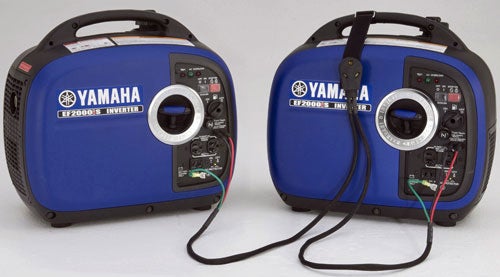 Yamaha already uses the Sidewinder name as a cabling device to combine the power of two Yamaha EF2000 inverter generators.
Yamaha already uses the Sidewinder name as a cabling device to combine the power of two Yamaha EF2000 inverter generators.Supposing some of the “twitter-verse” speculation is correct and Yamaha will conjoin its lightweight, high-revving Phazer twin on a new lightweight Arctic Cat platform, how does that make sense? Both Cat and Yamaha need new and a platform is less expensive to design and manufacture than an all-new four-stroke engine. Isn’t that why Cat and Yamaha struck up their deal in the first place? That two-stroke 600cc C-TEC2 motor can’t have cost Cat what an all new four-stroker would have. Plus, with Yamaha presenting them with a four-stroke option, Cat can build a new 800cc two-stroke off its C-TEC2 technology.
What we don’t really know at the moment is just how healthy the sled market has become and is it ready to support a broader line of models? With the industry plodding along at 150,000 units or less for the past few seasons, the profit has been in the mountain and high performance on- and off-trail segments. The so-called entry-level models where price rules were left to buyers of used and carry-over sleds. That may be changing as the return to winter may be bringing back riders who dropped out or, perchance, not all under-40 year olds only care about video games.
But would the Sidewinder name be appropriate for a lower buck, moderate power sled? The original 1981 Scorpion Sidewinder, ironically, was also an Arctic Cat built snowmobile. Powered by a 436cc Suzuki twin with reed valves and 34mm slide carburetors, the 1981 pre-production Scorpion Sidewinder gave away upwards horsepower to the kings of the lake, Polaris’ Centurion Indy 500cc triple and Arctic Cat’s El Tigre 6000. Interestingly, the Sidewinder mimicked the Arctic Cat El Tigre in style if not performance. The El Tigre enjoyed the latest 500cc Suzuki twin and the latest clutch and drive train updates.
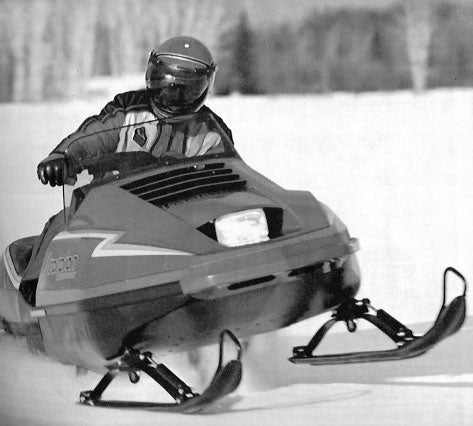 Interestingly, the 1981 Scorpion Sidewinder was also Arctic Cat collaboration as Cat dropped a Suzuki 440 twin in a Scorpion-branded El Tigre chassis. Arctic Cat had taken over the Scorpion brand in 1978.
Interestingly, the 1981 Scorpion Sidewinder was also Arctic Cat collaboration as Cat dropped a Suzuki 440 twin in a Scorpion-branded El Tigre chassis. Arctic Cat had taken over the Scorpion brand in 1978.As you can see, the Yamaha and Arctic Cat hook-up is not Cat’s first go-round with collaborations. Of course, Cat owned Scorpion, having taken over the Scorpion brand three years before the Sidewinder hit the snow. Cat also collaborated with Suzuki by fitting a Suzuki twin into an El Tigre chassis to create the Suzuki Fury. And Cat built some Sno-Jets at its Thief River Falls, Minn. plant for Kawasaki. So, no, Arctic Cat has a history of this and the Yamaha partnership is nothing new.
One Year Later: The Arctic Cat/Yamaha Deal
But, the question remains, how do Yamaha and Arctic Cat arrive at a Yamaha Sidewinder? Since it’s unlikely that Yamaha has come up with an all-Yamaha new model for 2016, it most likely would be a combination Arctic Cat platform with Yamaha power. Since Yamaha probably doesn’t want the expense of creating an all-new engine any more than Arctic Cat does, the Phazer twin makes sense. It can replace Cat’s two-stroke and with some fine-tuning can most likely make a bit more power to get it competitive with Ski-Doo’s 900 ACE and work as a replacement for the 85hp Suzuki 499cc two-stroke twin used in the ZR 4000 models.
Arctic Cat’s ZR 4000 series with an updated chassis and new power could be expanded into a nifty trail niche that could do battle with Ski-Doo’s 900 ACE powered GSX, MXz and Renegade series. That could be Yamaha’s home for the Sidewinder nameplate. Or, not!
.jpg) Yamaha has promised a 50th anniversary model to celebrate the company’s first ever snowmobile, the 1968 SL 350.
Yamaha has promised a 50th anniversary model to celebrate the company’s first ever snowmobile, the 1968 SL 350.We’ll have to wait and see what transpires. Heck, it could be the name for the 50th anniversary all-new, all-Yamaha 2018 model. Or, more generator cables!








 Your Privacy Choices
Your Privacy Choices